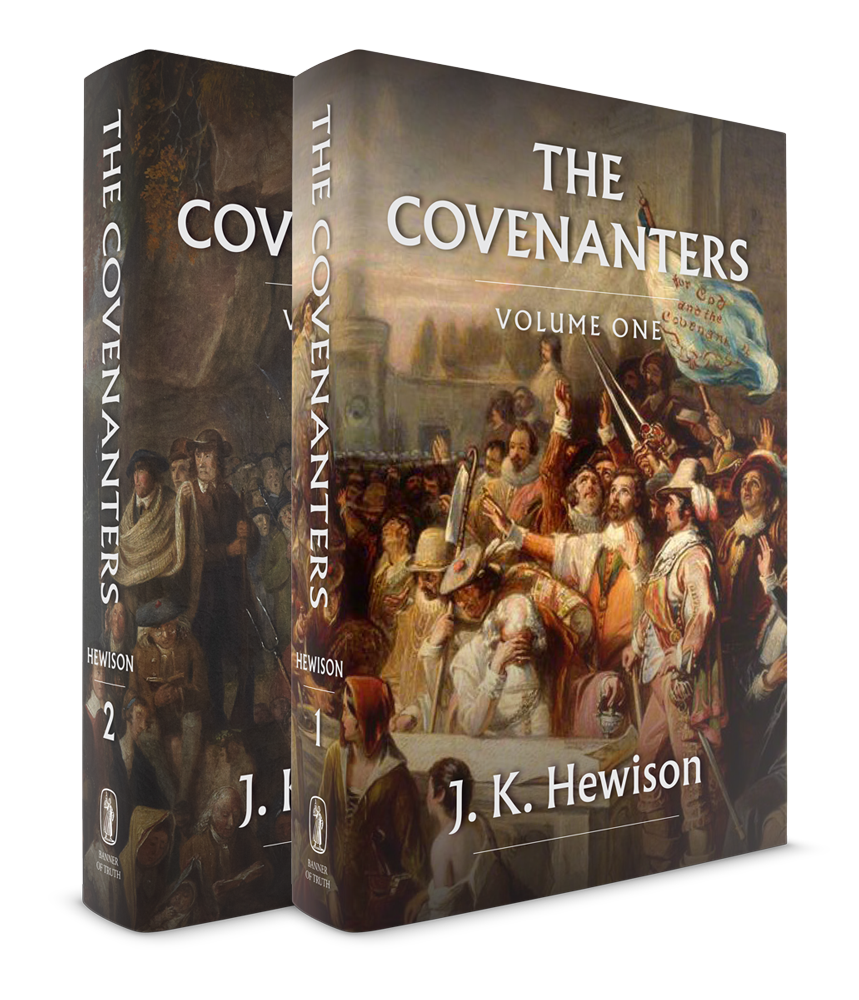A Book Review from Books At a Glance
By Gary Steward
James King Hewison (1851-1941), a Scottish Presbyterian minister, originally published this two-volume set in 1908 after devoting a number of years of painstaking work to the study of Scottish church history. While a slightly revised edition appeared in 1913, Banner of Truth has recently reprinted Hewison’s monumental work with new typesetting, beautiful endpapers, and quality binding. These truly are beautiful volumes.
Hewison’s work covers the one-hundred-and-fifty year period of Scottish church history from the beginning of the Scottish Reformation in 1540 to the reconvening of the Presbyterian General Assembly in 1690, just after the Glorious Revolution. His aim was to recover the true history of the Covenanters and show that they were not just “a rigid sect in the Christian church” or “a restless, rebellious political party.” Instead they were, in Hewison’s estimation “one of the most extraordinary orders of devotees which the civilized world ever saw” (xi). They helped shape the development of Scotland in very important ways.
Hewison’s admiration for the Scottish Protestants of the sixteenth and seventeenth centuries (so-named “Covenanters” for the formal oaths of allegiance that they signed, often with their own blood, vowing to defend Protestantism and Scottish Presbyterianism with their lives and possessions) did not prevent him from providing a mostly factual chronicle of events. In fact, it was his historian’s eye for detail and precision that give these volumes their unique character. Organized chronologically, Hewison’s work marches through the events in an orderly way, demonstrating the interconnectedness of church and state in these pivotal years.
Hewison begins by briefly recounting the events that began the Covenanter movement, which started with the earliest covenanter, John Erskine of Dun (1508-1590), and the Dun Covenant of 1556. In a somewhat terse and plain style, Hewison gives his chronological account of the political and religious events that took place next, from the return of Mary Stuart in 1561 to the Bishops’ Wars, the Solemn League and Covenant, the Civil War, the rule of Cromwell, the Restoration, the “Killing Times,” and all the way to the Glorious Revolution. Lesser known names and events abound, as Hewison’s work is filled with incredible detail and copious information. Those wanting to use these volumes to supplement their study of particular individuals and events will be thankful for the index that appears at the end of volume two.
Also at the end of volume two is a helpful appendix, entitled “Literary Men and their Works from 1625 till 1690.” These sections discuss some of the chief writers of the Covenanters, giving brief comment on some of their most significant works. This section is helpful for those who might want to read some of the writings of the Covenanters themselves.
Hewison’s work is valuable for its orderly, detailed account of the factual information of the Scottish Covenanters. It does not excel in its ability to inspire and interest the general reader. Another work better suited for a popular audience is John Howe’s Scots Worthies, published originally in 1870 and now republished by Banner of Truth as well. Howe’s volume contains a sequence of biographical narratives. If readers are looking for a straightforward account of the historical events, Hewison’s work fits the bill. If readers are looking to be inspired by compelling narratives, then Howe’s work might be better. Both might be read together to provide a full understanding of the events in Scotland during these years.
Gary Steward, PhD
Assistant Professor of History
Colorado Christian University
Lakewood, Colorado
